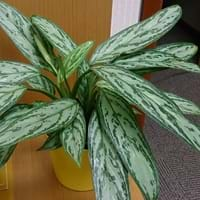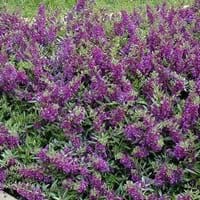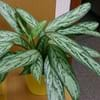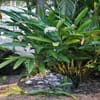Life Span
Perennial
Perennial
Type
Tender Perennial
Tender Perennial
Origin
Southern Asia
Mexico, Caribbean
Types
Not Available
Not available
Number of Varieties
Not Available
Habitat
subtropical regions, Tropical areas
Cultivated Beds, gardens
USDA Hardiness Zone
14-15
9-10
Sunset Zone
H2
H1, H2, 1a, 1b, 2a, 2b, 3a, 3b, 4, 5, 6, 7, 8, 9, 10, 11, 12, 13, 14, 15, 16, 17, 18, 19, 20, 21, 22, 23, 24
Habit
Clump-Forming
Upright/Erect
Minimum Height
Not Available
Minimum Width
Not Available
Flower Color
White, Light Green, Ivory
Purple, Lavender
Flower Color Modifier
Not Available
Not Available
Fruit Color
Red, Orange
Not Available
Leaf Color in Spring
Not Available
Green
Leaf Color in Summer
Not Available
Green
Leaf Color in Fall
Not Available
Green
Leaf Color in Winter
Not Available
Green
Leaf Shape
Lanceolate
Long linear and narrow
Plant Season
Spring, Summer, Fall, Winter
Spring, Summer, Fall
Sunlight
Partial Sun, Partial shade, Full Shade
Full Sun, Partial Sun
Growth Rate
Not Available
Very Fast
Type of Soil
Loam, Sand
Clay, Loam, Sand
The pH of Soil
Acidic, Neutral, Alkaline
Acidic, Neutral, Alkaline
Soil Drainage
Average
Well drained
Bloom Time
Indeterminate
Indeterminate
Tolerances
Drought
Drought, Heat And Humidity
Where to Plant?
Ground, Pot
Container, Ground, Pot
How to Plant?
Cuttings, Divison
Root Division, Seedlings, Tip cutting
Plant Maintenance
Medium
Low
Watering Requirements
Allow to dry out slightly between watering
Needs 2-3 times watering per week, Water daily during growing season, Water in morning to avoid prompting diseases, Water slowly, and allow to dry completely between soakings
In Summer
Lots of watering
Lots of watering
In Spring
Moderate
Moderate
In Winter
Average Water
Average Water
Soil pH
Acidic, Neutral, Alkaline
Acidic, Neutral, Alkaline
Soil Type
Loam, Sand
Clay, Loam, Sand
Soil Drainage Capacity
Average
Well drained
Sun Exposure
Partial Sun, Partial shade, Full Shade
Full Sun, Partial Sun
Pruning
Remove damaged leaves, Remove dead branches, Remove dead leaves
Cut or pinch the stems, Dispose of diseased portions, Remove damaged leaves, Remove dead branches, Remove dead leaves, Remove dead or diseased plant parts
Fertilizers
All-Purpose Liquid Fertilizer
All-Purpose Liquid Fertilizer, Apply 10-5-10 amounts
Pests and Diseases
Aphids, Mealybugs, Nematodes, Spider mites
Aphids, Powdery mildew, Red blotch
Plant Tolerance
Drought
Drought, Heat And Humidity
Flowers
Insignificant
Showy
Flower Petal Number
Not Available
Single
Foliage Texture
Not Available
Medium
Foliage Sheen
Glossy
Matte
Attracts
Not Available
Butterflies
Allergy
inflammation in lips, Skin irritation, Throat itching
Not Available
Aesthetic Uses
Showy Purposes
Beautification, Cottage Garden, Showy Purposes
Beauty Benefits
Not Available
Not Available
Environmental Uses
Air purification
Not Available
Medicinal Uses
Not Available
anti-inflammatory
Part of Plant Used
Whole plant
Flowers
Other Uses
Not Available
Used as Ornamental plant, Used for bedding in gardens
Used As Indoor Plant
Yes
Yes
Used As Outdoor Plant
Yes
Yes
Garden Design
Bedding Plant, Container, Edging, Groundcover, Houseplant, Tropical
Bedding Plant, Container, Mixed Border, Tropical
Botanical Name
AGLAONEMA 'Emerald Bay'
ANGELONIA angustifolia
Common Name
Aglaonema, Chinese Evergreen
Angelonia, Narrowleaf Angelon, Summer Snapdragon
In Hindi
Chinese Evergreen
Angelonia
In German
Kolbenfaden
Angelonia
In French
Chinese Evergreen
Angelonia
In Spanish
Chinese Evergreen
Angelonia
In Greek
Chinese Evergreen
Angelonia
In Portuguese
Chinese Evergreen
Angelonia
In Polish
Chinese Evergreen
Angelonia
In Latin
Chinese Evergreen
Angelonia
Phylum
Tracheophyta
Magnoliophyta
Class
Liliopsida
Magnoliopsida
Order
Alismatales
Scrophulariales
Family
Araceae
Scrophulariaceae
Genus
Aglaonema
Angelonia
Clade
Not Available
Angiosperms, Asterids, Eudicots
Tribe
Aglaonemateae
Not Available
Subfamily
Not Available
Not Available
Number of Species
Not Available
Season and Care of Chinese Evergreen and Angelonia
Season and care of Chinese Evergreen and Angelonia is important to know. While considering everything about Chinese Evergreen and Angelonia Care, growing season is an essential factor. Chinese Evergreen season is Spring, Summer, Fall and Winter and Angelonia season is Spring, Summer, Fall and Winter. The type of soil for Chinese Evergreen is Loam, Sand and for Angelonia is Clay, Loam, Sand while the PH of soil for Chinese Evergreen is Acidic, Neutral, Alkaline and for Angelonia is Acidic, Neutral, Alkaline.
Chinese Evergreen and Angelonia Physical Information
Chinese Evergreen and Angelonia physical information is very important for comparison. Chinese Evergreen height is Not Available and width Not Available whereas Angelonia height is 30.50 cm and width 30.50 cm. The color specification of Chinese Evergreen and Angelonia are as follows:
Chinese Evergreen flower color: White, Light Green and Ivory
Chinese Evergreen leaf color: Not Available
Angelonia flower color: Purple and Lavender
- Angelonia leaf color: Green
Care of Chinese Evergreen and Angelonia
Care of Chinese Evergreen and Angelonia include pruning, fertilizers, watering etc. Chinese Evergreen pruning is done Remove damaged leaves, Remove dead branches and Remove dead leaves and Angelonia pruning is done Cut or pinch the stems, Dispose of diseased portions, Remove damaged leaves, Remove dead branches, Remove dead leaves and Remove dead or diseased plant parts. In summer Chinese Evergreen needs Lots of watering and in winter, it needs Average Water. Whereas, in summer Angelonia needs Lots of watering and in winter, it needs Average Water.





